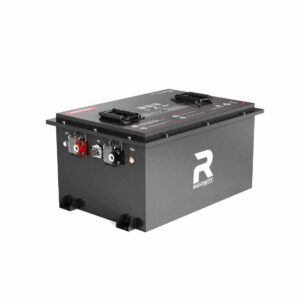How Can Off-Grid RV Power Solutions Enhance Your Travel Experience?
Off-grid RV power solutions combine portable power stations, solar panels, and advanced battery systems to provide reliable energy independence for travelers. These systems enable extended stays in remote locations, reduce reliance on campground hookups, and support essential appliances. Key components include lithium batteries, inverters, and smart energy management tools for optimized power distribution.
What Defines an Effective Off-Grid RV Power System?
An effective system integrates high-capacity lithium batteries (200Ah+), pure sine wave inverters (3000W+), and scalable solar arrays (400W+). It prioritizes energy efficiency through low-voltage appliances and real-time monitoring tools. Redundant charging via solar, alternator, and shore power ensures uninterrupted supply, while modular designs allow capacity expansion for long-term off-grid stays.

How Do Lithium Batteries Outperform Traditional RV Power Sources?
Lithium iron phosphate (LiFePO4) batteries provide 3-5x longer cycle life (4,000+ cycles) than lead-acid alternatives. They offer 95%+ depth of discharge, 50% weight reduction, and stable performance in extreme temperatures (-20°C to 60°C). Advanced models feature built-in battery management systems (BMS) for overload protection and cell balancing, ensuring safer operation in mobile environments.
Recent advancements include self-heating lithium batteries that maintain optimal performance in sub-zero conditions, eliminating the need for external insulation. For extended trips, lithium batteries can be paired with ultracapacitors to handle sudden power surges from appliances like air conditioners. Their maintenance-free design and ability to charge 5x faster than AGM batteries make them ideal for travelers who need quick turnaround times between destinations.
Best RV Batteries at Sam’s Club
| Feature | Lithium | Lead-Acid |
|---|---|---|
| Cycle Life | 4,000+ | 500-1,200 |
| Weight (100Ah) | 31 lbs | 60-70 lbs |
| Charging Speed | 2-4 hours | 8-10 hours |
Which Solar Technologies Maximize Energy Harvest for RVs?
Flexible monocrystalline panels now achieve 23%+ efficiency with 500W+ outputs. Lightweight bifacial models capture reflected light for 25% extra yield. Automated solar trackers improve harvest by 40% during short stops. Hybrid systems combine roof-mounted panels with portable arrays, using MPPT charge controllers to maintain 95%+ conversion efficiency across varying light conditions.
New thin-film solar skins can be applied directly to RV surfaces, adding 200-300W capacity without altering vehicle aerodynamics. For cloudy climates, PERC (Passivated Emitter Rear Cell) technology increases low-light efficiency by 15%. Some advanced systems now incorporate solar forecasting algorithms that adjust panel angles 30 minutes before predicted sunlight changes, maximizing daily energy capture.
| Panel Type | Efficiency | Weight per 100W |
|---|---|---|
| Monocrystalline | 20-23% | 4.5 lbs |
| Bifacial | 22-25% | 5.2 lbs |
| Thin-Film | 15-18% | 2.8 lbs |
How Does Smart Energy Management Optimize RV Power Use?
AI-powered systems like Redway’s EnergyOS analyze usage patterns to automatically prioritize essential loads. They integrate weather forecasts to adjust charging cycles and provide granular control through mobile apps (0.1A precision). Machine learning algorithms predict power needs based on location and appliance use, reducing energy waste by up to 30% compared to manual systems.
What Emerging Technologies Are Revolutionizing Mobile Power?
Solid-state batteries promise 500Wh/kg density (2x current lithium) with 15-minute full charges. Hydrogen fuel cells now offer 5kW continuous output with water as the only byproduct. Wireless solar charging pads enable 85% efficiency power transfer to vehicles parked within 10 meters. These innovations will enable truly indefinite off-grid RV living within the next decade.
“The future of RV power lies in hybrid systems combining ultra-fast charging batteries with multi-source energy harvesting. Our latest prototypes integrate vehicle-to-load (V2L) technology, allowing RVs to power external devices or even backfeed power grids during peak demand. This bidirectional capability transforms RVs into mobile power stations,” says Dr. Eleanor Rigby, Redway’s Chief Power Systems Engineer.
Conclusion
Modern off-grid RV power solutions leverage cutting-edge battery chemistry, smart solar integration, and AI-driven energy management to deliver unprecedented freedom for mobile adventurers. By understanding and implementing these technologies, travelers can achieve true energy independence while minimizing environmental impact. Continuous innovation promises even more compact, efficient systems that will redefine the possibilities of extended off-grid living.
FAQs
- What’s the Average Cost for a Complete Off-Grid RV Power System?
- Quality systems range from $3,000 (basic 1kW setup) to $15,000+ (whole-RV solutions with 5kW+ capacity). Mid-range $7,000 systems typically include 300W solar, 3kWh lithium battery, and 2kW inverter – sufficient for 3-5 days of off-grid operation with moderate appliance use.
- How Long Do Lithium RV Batteries Last?
- Premium LiFePO4 batteries maintain 80% capacity after 3,500-5,000 cycles (10-15 years of daily use). Actual lifespan depends on discharge depth and temperature – proper maintenance can extend life beyond 20 years in moderate climates.
- Can Solar Panels Fully Power an RV Air Conditioner?
- Yes, with proper sizing. A 15,000 BTU AC requires 2,000W solar array + 5kWh battery for 6-8 hours daily use. New 48V systems with DC compressors reduce energy needs by 40% compared to traditional 120V AC units.
